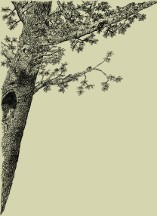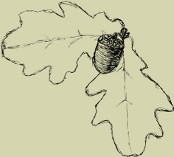42 41 40 39 38 37 36 35 34 33 32 31 30 29 28 27 26 25 24 23 22 21 20 19 18 17 16 15 14 13 12 11 10 9 8 7 6 5 4 3 2 1
Zeszyt 7 (1966)
Investigation was carried out on four softwood and eleven hardwood species which pH value, content of substances soluble in alcohol-benzene mixture, cold water soluble substances content, and tannin content were determined.
Four cold-setting glues were applied viz. hide glue, casein glue, urea-formaldehyde glue, and phenol-formaldehyde glue.
From each wood species nine block samples with the glue line oriented in radial direction, and nine samples with the glue line oriented in tangential direction in relation to growth rings were prepared. Applied pressure was 490 kPa. For each wood species the same number of samples were prepared from solid wood.
Shearing strength of glued samples and solid wood samples was determined using Shopper's testing machine of 10 Mg capacity.
Basing on results obtained the following conclusions can be made:
1. Increase of shearing strength of wood subjected to gluing is generally accompanied by the increase of glue line shearing strength, although is not proportional. Glue line shearing strength increase is relatively most proportional to the solid wood shearing strength in case when urea glue was used, and the least proportional when hide glue was applied.
2. No evident correlation between the relative shearing strength of glue line (the percentage ratio of glue line strength to wood strength) and such properties as chemical reaction of wood, content of substances soluble in alcohol-benzene mixture, cold water soluble substances content and tannin content — was discovered.
3. Best results — as determined by the mean relative shearing strength of glue lines calculated for four glues — were obtained when elm and poplar wood was glued (above 90%). Very good results were obtained also for pine heartwood (89%), good for hornbeam and alder (above 85%), and fairly good for pine, larch, beech, maple, oak, and ash wood species (80-85%).
Fir and spruce wood species can be regarded as those characterized by an intermediate gluing ability (72-78%) while Robinia, lime and birch proved to be of low gluing ability (64-69%).
Three-layer particleboard made of pine wood, flaxboard, hardboard (heat treated), and non-compressed fibreboard made of pine wood were subjected to 60Co irradiation. Irradiated samples as well as control ones were subsequently used in testing their resistance to fungal attack of Coniophora cerebella (Pers.) Duby fungus. Clear culture of the fungus were grafted in Kolle flasks on disks made of spruce groundwood treated with 8% solution of malt extract.
After the entire area of the nourishing substrate was covered by mycelium, samples of tested material with moisture content of about 8%, were inserted in twos into separate flasks on glass plates. Flasks with samples were stored for the period of 120 days in conditioning chamber at 21 ± 1°C temperature and 80 ± 5% relative humidity of the air. Percentage rate of sample weight decrease in relation to initial weight was accepted as a measure of fungus destructive activity. Besides, toughness strength of samples subjected to the activity of the fungus was determined (with the exception of non-compressed fibreboard).
It was found, that particleboard samples subjected to gamma irradiation proved to be more resistant to Coniophora cerebella attack than control samples. Samples of this material irradiated with 6.3 Mrad dose featured more than 20% lower loss in weight than not irradiated control samples. No relationship was found between the amount of radiation energy absorbed and the amount of radiation energy absorbed and the toughness strength of particleboard samples subjected after irradiation to fungal decay.
Flaxboard samples irradiated with doses of 1.12, 3.35, and 6.04 Mrad, featured heavier loss in weight than not irradiated control samples. This behavior, contrary to particleboard, can be explained by different chemical composition of flax shives and pine wood from which particleboard was made. Flax shives are containing about twice the amount of pentosans in comparison with pine wood. From among chemical components of the cell wall, pentosans are the least resistant to the action of gamma rays.
Flaxboard samples subjected to irradiation with doses of 0.96, 2.88, and 5.75 Mrad absorbed, as well as non-compressed fibreboard samples with 8.14 Mrad absorbed, featured somewhat lesser loss in weigh than control samples. Non-compressed fibreboard samples irradiated with 1.14 and 3.41 Mrad doses, showed somewhat heavier loss in weight than controls.
Differences in behavior between fibreboard and particleboard subjected, after gamma irradiation, to the activity of Coniophora cerebella fungus can be explained by the presence of urea-formaldehyde resin in particleboard. In this resin, as is evident from investigation carried out by Frejdin, secondary chemical bonds are formed as an effect of irradiation, and those bonds are causing the increase of mechanical properties of tested material.















 Pobierz PDF
Pobierz PDF